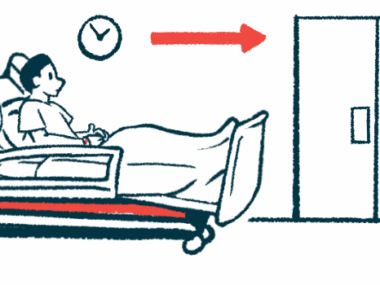How race and culture shape my disability experience
Being Asian American and having CMT interact in interesting ways
Written by |

I’m an Asian American with Charcot-Marie-Tooth disease (CMT). Of course, I’m more than this, but these two cherished identities of mine interact with each other, sometimes in profound ways.
The way I experience life as an Asian American is altered due to my CMT, and vice versa. It’s a feature of the disabled experience that is important to recognize, as race and culture matter.
My Asian identity affects the way I experience life with CMT when members of my family and I consider what to do when we enter the homes of other folks in the Asian community. Taking off your shoes before entering someone’s home is an important sign of respect for many of us in Asian cultures. Yet it’s challenging for CMTers who wear ankle-foot orthoses.
The widespread use of chopsticks in Asian culture is something I once loved due to their utility, design, and reflection of values and culture. But now, I often struggle to wield them effectively due to my weakened dexterity, which I find embarrassing.
During my childhood, the intersection of my CMT and Asian American experiences also manifested in feelings of shame about my particular physical weaknesses, which made me feel that I was confirming awful stereotypes that Asian guys are weak and effeminate.
While these have been my own personal experiences, I’m aware that this intersection can manifest in other ways. For some in the Asian American community, a fear of communal shame and the loss of respect can result in a reluctance to even talk about disability or acknowledge its existence.
In conversations with other people of color in disability spaces, I’ve learned that for many, racism and discrimination are compounding factors that make living with a disability even harder. It’s not uncommon, for example, for people of color to be doubted and dismissed at the doctor’s office.
Additionally, language and cultural barriers can create hurdles that make it more difficult to obtain assistance from physicians or other medical specialists.
Race and culture are important in the disability experience, and we should keep this in mind in order to better support those we love.
Note: Charcot-Marie-Tooth News is strictly a news and information website about the disease. It does not provide medical advice, diagnosis, or treatment. This content is not intended to be a substitute for professional medical advice, diagnosis, or treatment. Always seek the advice of your physician or other qualified health provider with any questions you may have regarding a medical condition. Never disregard professional medical advice or delay in seeking it because of something you have read on this website. The opinions expressed in this column are not those of Charcot-Marie-Tooth News or its parent company, Bionews, and are intended to spark discussion about issues pertaining to Charcot-Marie-Tooth.






Dawn Hill
Thank you for giving us a different and unique perspective for those of us with CMT. I had never thought about those things. I am Irish-American born here in America but my father (who also had the disease but didn't realize what it was) was born in Ireland and I have many 1st cousins still there. I've tried to talk to them about who might also have CMT and I feel like they are collectively afraid to admit any symptoms at all. I know this gene mutation comes from his side and even found evidence in my g gfather's Irish military records!! I want to educate them and help find a cure, so it's frustrating.
Take care-